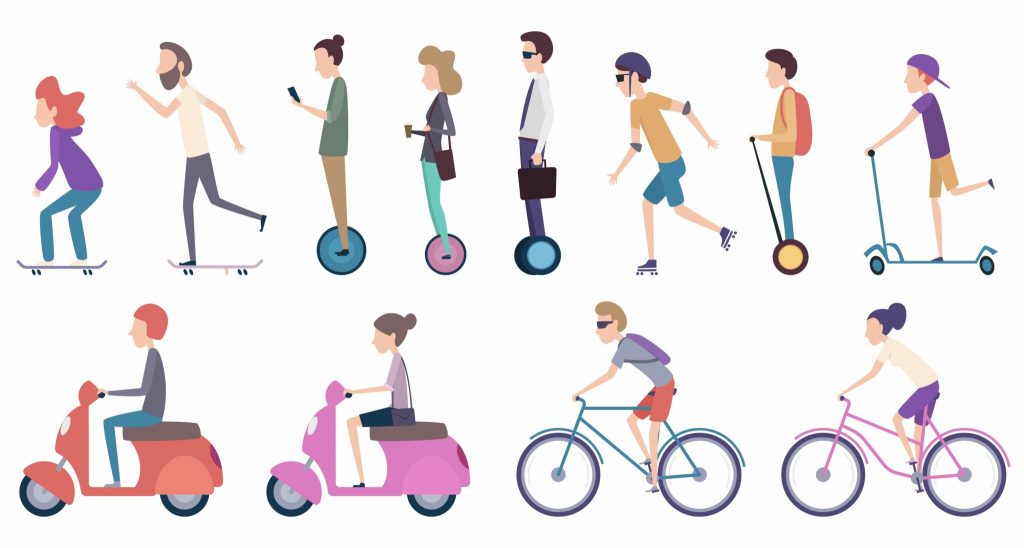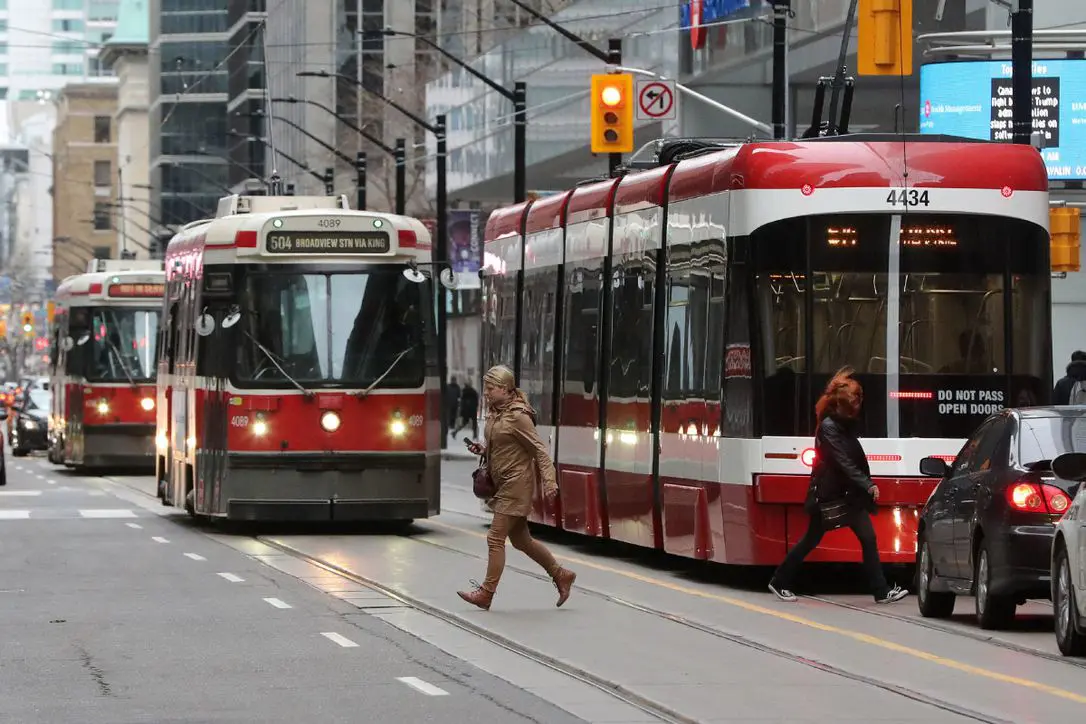Planting a Path of Flowers for Transportation Researchers
My name is Bruno Dos Santos and I am currently a first-year PhD student in the geography program at McMaster University. I am part of Mobilizing Justice, working as a PhD student in the Data Driven Equity Standards group. This working group has Michael Hain as its partner leader and Dr. Antonio Paez as its academic leader, who is also my PhD supervisor. The Data Driven Equity Standards group aims to create guidelines for planning the transportation system, applying state-of-the-art data and methodologies.
Although my research is still in the early stages, my area of study concentrates on understanding how the transportation system can play as a barrier to a person trying to find or keep a job. There are many situations in which the so-called cost of transportation, usually money or time, can be too high for a person who wants to go to work or for an unemployed person to feel motivated to look for a job. For example, an unemployed person might give up on a job interview because of the lack of public transport to their destination, or a worker might find it difficult to keep their job because of the long commute time.
As defined by mobilizing justice in one of its reports (Palm et al., 2023), we use accessibility, or access to destinations, as the main transport supply metric to be used in our research. This was motivated by the fact that we consider accessibility metrics as a transparent, comprehensive and replicable indicator, across different jurisdictions and time periods, of transportation supply. In the context of transport geography, accessibility is defined as the potential to reach spatially distributed opportunities (Páez et al., 2012). These opportunities typically include destinations that are crucial for ensuring that all members of society can lead a fully functioning life, such as parks, cultural activities, health services, education, and jobs – the opportunity of study of my research.
Transportation researchers need to use surveys that provide information about where people live and where the opportunities are located to carry out the accessibility analysis. In the case of my research, the location of the opportunity means where the job opportunities are located, which can be considered a very sensitive information. This type of information can be obtained from surveys such as the Transportation Tomorrow Survey (TTS), organized by the City of Toronto, and the Enquête Origine-Destination, organized by Quebec City. On a national scale, Statistics Canada provides valuable sources for transportation surveys, mainly the Demographic Census and the General Social Survey and the Canadian Social Survey.
However, access to the raw data from the surveys provided by Statistics Canada is restricted, requiring a lengthy process to obtain and manipulate the data. For this reason, my research is being conducted in collaboration with the Statistics Canada Research Data Centre (RDC) at McMaster University, ensuring that necessary precautions are taken to conduct the research safely and without violating the confidentiality of the data. The McMaster RDC officer is a member of the Canadian Research Data Center Network, which provides researchers with access to Statistics Canada microdata master files. In order to use the center, researchers with approved projects must become “deemed employees” of Statistics Canada. The process of becoming a “deemed employee” included the creation of a research project, which explained the reasons for requesting access to the research, described the methodology and expected results, and included a curriculum review and a criminal record check. As I am an Brazilian citizen, I also needed to obtain a criminal record certificate from the embassy of my home country.
The process of obtaining permission to access Statistics Canada’s survey took around six months and was not the only difficulty encountered. In Brazilian Portuguese, we have the saying “not everything is flowers” (nem tudo são flores), as a way of reminding ourselves that the path also has prickles. In my case, although I have some experience working with spatial analysis, transportation research is new to me and the learning curve can sometimes be intimidating. Another difficulty has been working with the master data files from the surveys. In the case of the 2021 Population Census by itself, there are more than 9 million respondents and hundreds of variables contained in the database. In addition, Canada currently lacks a standardized methodology and objectives, at least at the national level, to ensure the equitable distribution of transportation infrastructure (Mobilizing Justice, 2023).
I believe that another difficulty for researchers of non-Canadian origin, perhaps not often talked about, is understanding the way in which Canada is organized territorially. For example, Brazil doesn’t have so many levels of aggregation and dissemination of the information from the demographic census. In the case of the Brazilian census, there are only two levels of data dissemination: the census sector and the weighted areas. In Canada, the so-called statistical boundaries are divided into 9 spatial units, from economic regions to dissemination blocks.
However, these difficulties have motivated us to create a “path of flowers” for future researchers. While we can’t help with the process of granting access to the RDC’s surveys, we can help researchers manipulate this data once it has been acquired. In addition to understanding the impact of the transport system on the employed or job-seeking population, the other aim of my research has been to standardize methodologies for transport analysis in a national scale. This standardization will cover from exploratory data analysis to the visualization of accessibility analysis, based on data extracted from RDC office surveys.
We are developing an R package that will facilitate the analysis of transportation data derived from the 2021 Canadian Census of Population. The package will include R markdown files that describe the steps required to obtain accessibility analyses for any region in Canada. Since access to census information is restricted, the methodology will divide the process of obtaining and analyzing accessibility metrics into distinct steps, allowing researchers to carry out part of the study at home or at personal office, without having to process all the analysis in a RDC office.
The figure below shows some examples of R markdown files that the R package will have, each containing a stage of the methodology. In this scheme, the first stage, “Exploratory Data Analysis”, the second stage, “Calculation of the travel time matrix”, and the fourth stage, “Accessibility and spatial analysis”, can be carried out outside an RDC office. The third step, “Calculation of accessibility measures”, must be carried out inside a RDC office if you want to work with the original Population Census data.

We will also provide a synthetic data set from the demographic census, with a selection of variables so the researcher can test and train the methodology before going to process the original data in an RDC office. Additionally, the package certifies that the data to be extracted is in accordance with the RDC’s code of ethics, ensuring that respondents’ information is kept confidential.
In conclusion, at the end of the process we hope that we have left other researchers with an easier path to follow and fewer difficulties than the one we encountered when we began our learning process.
References
Mobilizing Justice. (2023, April 6). Data Driven Equity Standards. Mobilizing Justice.
Palm, M., Teel, S., Tiznado-Aitken, I., Soukhov, A., Paez, A., Farber, S., & Hain, M. (2023). Developing Data Driven Equity Standards: Stakeholder Perspectives.
Páez, A., Scott, D. M., & Morency, C. (2012). Measuring accessibility: positive and normative implementations of various accessibility indicators. Journal of Transport Geography, 25, 141-153.
You may also like
 Documenting Canada’s Community Response to Transport Poverty: A 5-Year Review
Documenting Canada’s Community Response to Transport Poverty: A 5-Year Review
With the recent release of the Canadian Community Initiatives Addressing Transport Poverty Catalogue, accompanying report, and interactive web map, a multi-year effort… Read More
 Findings from the City of Grand Rapids’ Shared Micromobility Free Fare Pilot Program
Findings from the City of Grand Rapids’ Shared Micromobility Free Fare Pilot Program
The Free Fare Pilot Shared micromobility systems, such as bikeshare and scootershare, are increasingly important to cities’ transportation strategies, as they seek to move… Read More
 The Different Price Tags of Access: Transit, Housing Affordability and Demographics
The Different Price Tags of Access: Transit, Housing Affordability and Demographics
Introduction Building a new transit system? Great for commuters. Even better for housing prices. When cities build transit, nearby land and housing prices often shoot… Read More
